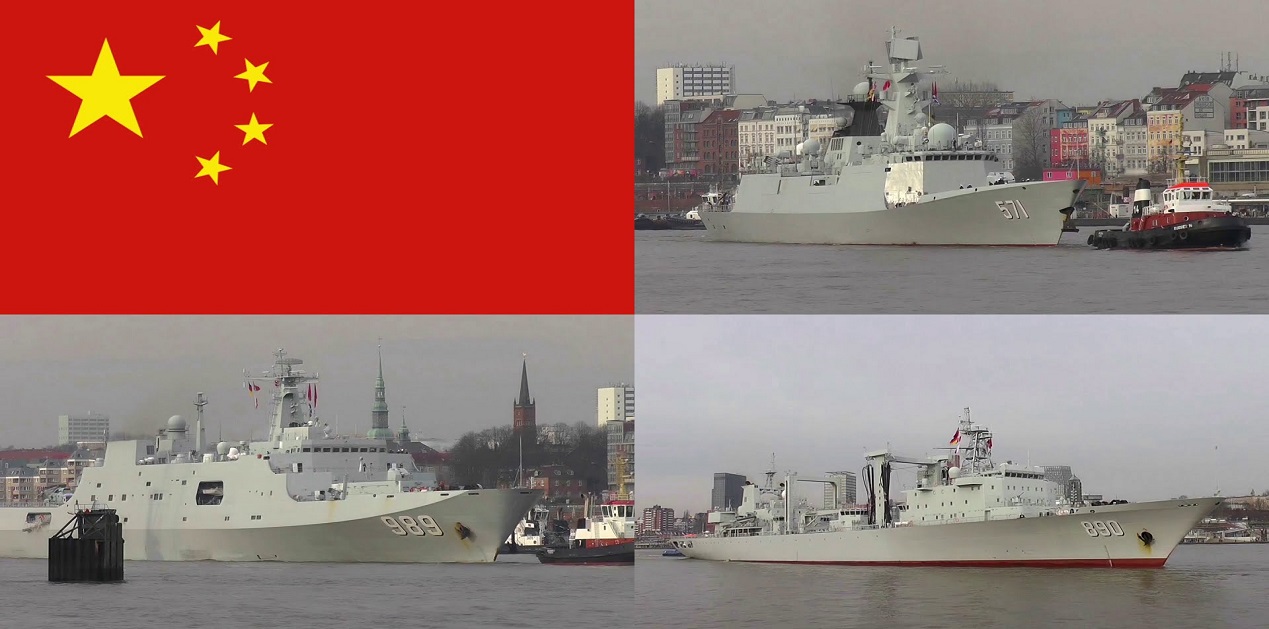Overview
With the status quo under challenge and competition for strategic space intensifying, especially among the major regional powers in the Indo-Pacific, the region has seen an increase in tensions. China’s ‘rise’ has fuelled its ambition to become a global power. The perceived decline of the US, its reduced interest in the region and its reluctance to back even treaty allies, like Japan and the Philippines, has encouraged China and exacerbated the situation.
Central to China’s ambition to become the pre-eminent regional power are maritime dominance and reunification with Taiwan. China has so far moved with prudence in its effort to advance its maritime territorial claims and held back from asserting itself in the East China Sea to avoid antagonising Japan, but it has moved with greater assertion in the South China Sea – including by ignoring the decision of the Permanent Court of Arbitration - where it has incrementally acquired a dominant position. It has shown little hesitation in clashing with the Philippines or Vietnam. It depicts the area as part of its sovereign territory in official maps and the People’s Liberation Army Navy (PLAN) has vowed in its recruitment ‘anthem’ to recover all the 3 million square kilometers of the South China Sea that Beijing claims. Meanwhile it has declared the South China Sea as a “core national interest”. At the same time, China is working towards realising the goal of extending its ‘reach’ across the Indian Ocean and the ‘far seas’.
PLAN: The Rise of a Global Naval Power
The 19th Party Congress held in Beijing from October 17 – 24, 2017, reiterated China’s aspiration to become a global maritime power and stressed that by 2050 the People’s Liberation Army (PLA) will be a “world class force”. By then PLAN was already projecting power and been maintaining a sustained presence in the Indian Ocean, with warships and a submarine sailing in waters off the Gulf of Aden for anti-piracy operations. By 2015-16 each Captain of PLAN vessels had familiarised himself with the Indian Ocean by completing a tour of duty there. The PLAN has since 2015 been sailing in the Baltic and Bering Seas, South China Sea, East Sea, Indian Ocean and the Mediterranean Sea and calling on ports in Europe and the African continent. Establishing a substantive near-permanent presence in the Indian Ocean is a major Chinese objective and China seems well on the way to achieving this. China has begun strengthening its Navy for larger tasks.
In fact, months before the 19th Party Congress in January 2017, Chinese President and Chairman of the Central Military Commission (CMC) Xi Jinping for the first time ever appointed a People’s Liberation Army Navy (PLAN) officer to head the important PLA Southern Theatre Command, which exercises operational jurisdiction over the South China Sea and Indian Ocean. It is among the more important commands and exercises jurisdiction over China’s first, and so far only, the overseas base of Djibouti and at least two aircraft carriers have already been earmarked for this Command. The appointment indicates that China’s leadership felt the PLA had acquired sufficient competence in Integrated Joint Operations (IJ0), to which it had given priority since 2007. PLAN Vice Admiral Yuan Yunbai a graduate of the PLAN Qingdao Submarine Academy and the first Navy officer to be appointed a Theatre Commander is familiar with the Gulf of Aden, Indian Ocean and the PLAN’s North Sea Fleet. Interestingly, Vice Admiral Yuan Yunbai, at the Shangri La Dialogue in 2015, had observed that the “South China Sea as the name indicates, is an area that belongs to China. And the sea from the Han dynasty a long time ago is where the Chinese people have been working and producing from the sea”.
As part of its plans to acquire blue sea capability and meet its obligation of ensuring the security of Chinese interests, investments and personnel in any part of the world, a continuing consideration for PLAN has been acquiring bases for its global operations. Chinese navy strategists have identified Karachi and Gwadar as a “base” and “logistics base” respectively and Chinese warships and submarines, including a nuclear submarine, have already visited there. Recent reports, claim that China has shown interest in the port of Jiwani, also in Pakistan. A study of July 2017 reported that China had doubled investments in acquiring overseas bases in 2016-17 to US$ 20 billion. Chinese companies have announced plans to buy or invest in nine overseas ports with discussions underway for several other ports. Some of the planned investments are: Melaka Gateway US$ 7.2 billion; Kuala Linggi Port US$ 2.84 billion; Penang Port US$ 1.4 billion; Kuentan Port US$ 177 million; and investments are planned in Indonesia’s Kalibaru project to expand Tanjung Priok, and in Arkhangelsk (Russia), Klaipeda (Lithuania), Kirkenes (Norway) and two ports in Iceland.
While subsequent to the 19th Party Congress there has been a noticeable increase in reporting on developments relating to the PLAN and China’s assertions of sovereignty over the South China Sea, the strengthening of the PLAN has been underway for years. Reporting in the Chinese official media and official and ‘informed’ blog sites reveal the rapid progress being made and the focus on building PLAN’s power projection capability. China’s stated objective is to have 350 surface warships and 100 submarines by 2030. China is, by all accounts, well on the way.
PLAN: Current Status of Equipment
By 2000, China had built 19 large surface combatants and 63 small surface combatants like frigates and corvettes. The speed of construction has been stepped up and in 2016 alone the PLAN commissioned 18 warships including destroyers, corvettes and guided missile frigates. In November 2017, the PLAN commissioned new Type 056/056A corvettes. Described as “light missile frigates”, the PLAN already has 37 of the Type 056/056A Jiangduo Class corvettes and wants to build a fleet of 60 corvettes with one new ship to be launched every three weeks. In 2017, PLAN commissioned seven Jiangduo Class corvettes with four to be inducted in December 2017 and January 2018. ASW capability is a priority for the PLAN.
At present China has six large naval vessels shipyards, namely, the Dalian shipyard, Huludao shipyard, Jiangnan shipyard, Zhonghua dockyard, Huangpu dockyard and the Wuchang dockyard. Among all these, the Dalian shipyard and Jiangnan shipyard are the main players and held up as models of China’s construction abilities. Jiangnan shipyard is going to finish construction work of 10 warships of four different kinds. Dalian shipyard is also going to complete the construction of eight warships of three different kinds. These two shipbuilding groups are mainly responsible for the construction of the Navy’s aircraft carrier, a guided missile destroyer, AIP powered submarine, landing craft etc. These two shipyards have also undertaken the task of constructing 054A type and 056 type corvettes, which will be used in coastal defense and aircraft carrier formation. The Jiangnan shipyard is going to build the 039B type AIP powered submarine, which has been developed after years of research.
Underlining its determination to continue reclaiming land and building ‘islands’ in the South China Sea to ‘recover’ sovereignty, China’s military media publicised the launch at the Jiangsu shipyard on November 3, 2017, of the ‘Tiankun’, described as “the biggest dredger in Asia”. The launch was timed for the eve of US President Trump’s visit. The Marine Design and Research Centre in Shanghai, which built the ‘Tiankun’, describes it as “a magical island maker”.
Supplements to PLAN: Aviation
A very important part of China’s naval ambition is aircraft carriers, which have been described as essential to China’s status as a major global power. Their construction has been given national priority and work has begun on China’s fourth aircraft carrier which it hopes to operationalise by 2024. It has been described as the largest of the aircraft carriers and is likely to have the latest electro-magnetic launcher system for carrier-based aircraft. Meanwhile, the indigenously built type 001A aircraft carrier is likely to commence sea trials in early 2018. To accelerate construction of aircraft carriers, China has constituted a contingent of 5000 personnel drawn from different shipyards with experience in building aircraft carriers.
To enhance its ‘far seas’ operations capability, the PLAN is developing its aviation arm. Chinese Navy strategists have justified this on the ground that training required for aircraft carrier pilots is different from that for land-based pilots. At the same time, it is observed that PLA Air Force (PLAAF) and PLA Army (PLAA) pilots are carrying out training exercises with PLAN pilots. As part of the effort to strengthen its aviation arm, the PLAN established the Naval Aeronautical University in 2017. In its first year, it recruited 450 pilots and commenced their first round of training on the JL-10 H Navy trainer jets. This year it is planned to recruit another 400 pilots. The PLAN estimates that it will have 40 jets aboard each aircraft carrier and should have at least two pilots for each aircraft.
After the PLAAF, the PLAN Aviation forces have also recently received the naval retrofit of the H-6KH bomber aircraft, photographs of which appeared on the internet. The H6KH bomber aircraft is said to be a new type of bomber developed for the PLAN Aviation force. Reports suggest that it may already be in active service. The H6KH bomber will significantly increase the PLAN’s sea combat capability.
There are clear indications that with this build-up in capacity, the PLAN is preparing for operations in distant seas. The PLAN’s destroyer ‘Haikou’, guided missile corvette ‘Yueyang’ and comprehensive supply ship ‘Qinghai’ for the first time conducted a 4-day combat training in the Gulf of Guinea, which the PLA Navy described as a test for the Navy’s long-term missions overseas and to examine its ability in the “distant strange battlefield environment”. China’s response to the crisis in the Maldives, including cautioning India against unilateral action, when viewed with the official statement that a 4-ship flotilla of “warships entered the East Indian Ocean at the time when the situation in the Maldives was tense, follow up of the situation was needed” is a pointer.
(The author is a former Additional Secretary in the Cabinet Secretariat, Government of India and is President of the Centre for China Analysis and Strategy)
(The paper does not necessarily represent the organisational stance. The author certifies that the article/paper is original in content, unpublished and it has not been submitted for publication/web upload elsewhere, and that the facts and figures quoted are duly referenced, as needed, and are believed to be correct.)
Image Source: https://www.youtube.com/watch?v=2xmxK4a0UhE











Post new comment